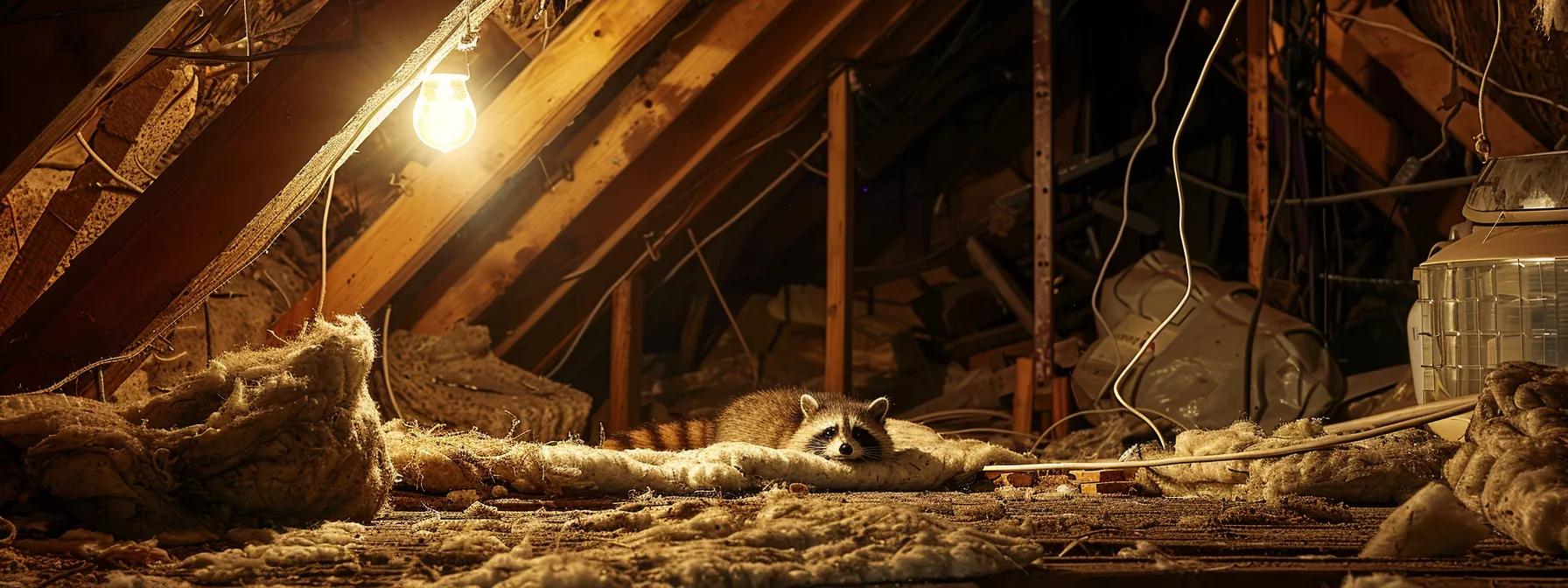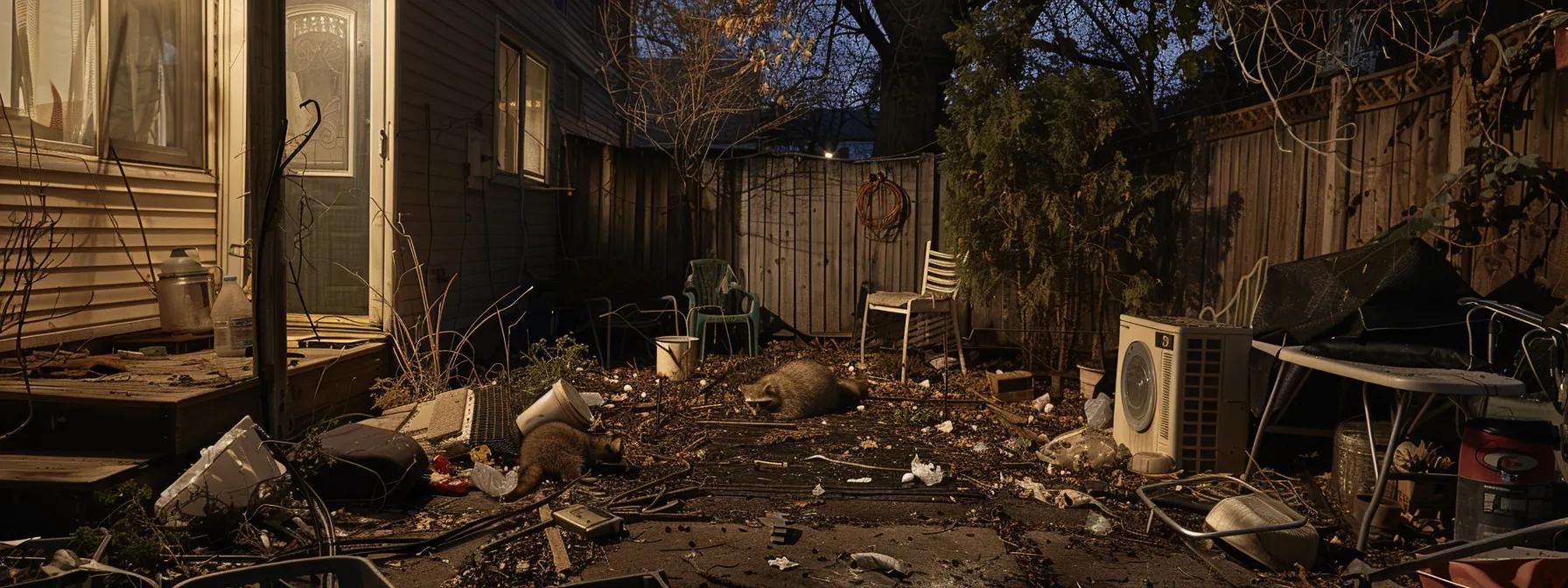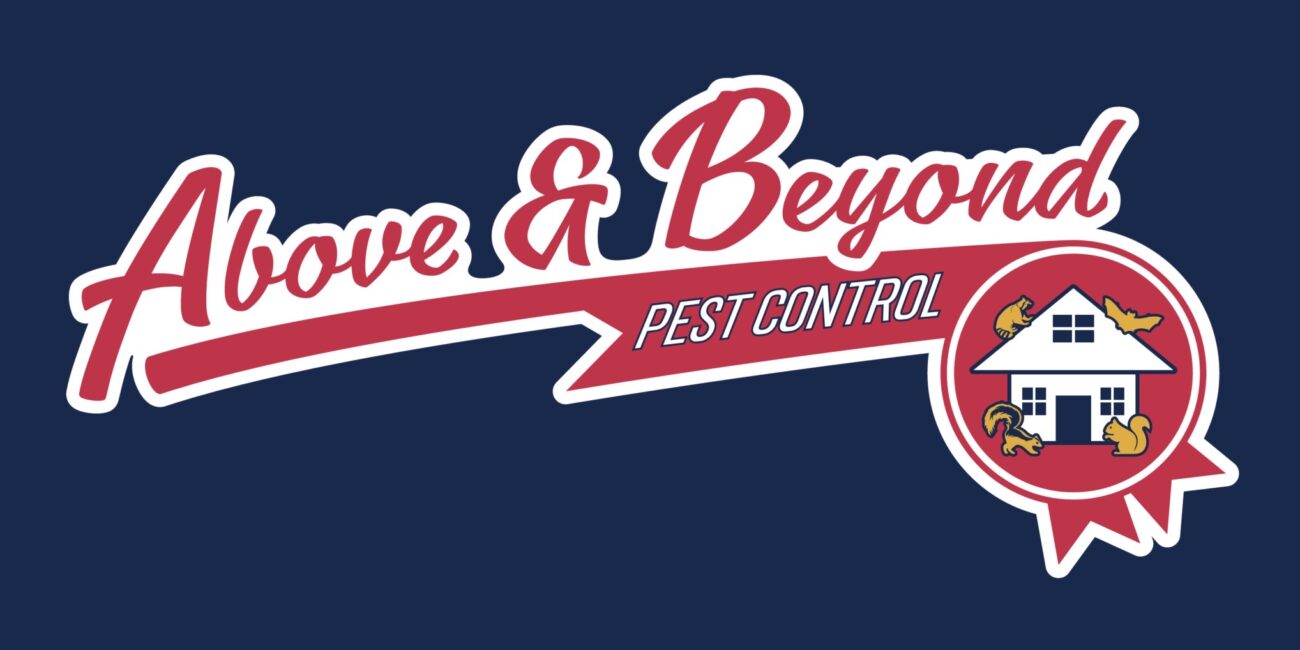What Attracts Raccoons to Your Home?
Raccoons are intelligent and resourceful mammals that have adapted well to urban and suburban environments. Their ability to locate food, water, and shelter near human dwellings has helped them thrive close to people. Understanding what attracts raccoons is essential for effective pest control and wildliferemoval. A mix of human-related factors and natural cues contributes to an environment that appeals to these mammals. Homeowners who address these attractants can protect their properties while promoting animal welfare.
Readily Available Food Sources Luring Raccoons
Raccoons are opportunistic feeders in search of easy food sources. Food remnants and improperly stored edibles upset the natural balance and encourage foraging behavior.
Unsecured Garbage Cans a Primary Draw
Unsecured garbage cans emit the aroma of decomposing food, attracting raccoons from far away. Studies indicate that raccoons can detect these odors over long distances. Failing to secure waste containers creates a buffet for these mammals, leading to frequent visits and messes around the property.
Pet Food Left Outdoors Offers an Easy Meal
Pet food left outside on porches or in yards is highly attractive due to its high protein and fat content. Even brief exposure can establish a routine feeding site, drawing raccoons closer over time.
Compost Piles as RaccoonBuffets
While composting is environmentally friendly, unsecured compost piles with partially decomposed matter offer a ready meal for raccoons. Poor management of these piles encourages repeated foraging visits.
Fallen Fruits and Garden Produce
Fruit trees and vegetable gardens can lead to raccoonvisits when overripe or damaged produce falls to the ground. These items offer both energy and nutrition, effectively luring raccoons into residential areas.
Bird Feeders and Squirrel Feeders
Bird and squirrel feeders provide a steady food supply. Spilled seeds and nuts easily attract raccoons, enhancing the food opportunities near these feeding stations.
Accessible Water Points Quenching RaccoonThirst

Water is essential for all mammals. Areas with permanent or cycling water sources offer hydration that complements available food and increases raccoonattraction.
Pet Water Bowls Left Outside
Outdoor pet water bowls create a constant water source. These bowls not only attract raccoons but may become gathering spots where they socialize, reinforcing the area as raccoon-friendly.
Ponds and Water Features
Artificial ponds, decorative water features, and small backyard pools provide ample water. Raccoons use these water sources not only for drinking but also for washing their food, a typical behavioral trait.
Leaky Faucets and Hoses
Even minimal water drips from leaky faucets or hoses can serve as reliable moisture sources. Persistent leaks, however small, become beacons for raccoons searching for hydration.
Bird Baths as Water Sources
Bird baths offer intermittent yet enticing water supplies. Although intended for birds, the shallow water supports both drinking and food washing needs for raccoons, encouraging repeat visits.
Poorly Drained Areas Creating Puddles
Low-lying areas that do not drain well form puddles that persist after rainfall. These puddles offer an accessible hydration point, particularly during hot weather periods.
Shelter Opportunities Provided by Your Property
Beyond food and water, raccoons seek safe shelter to rest and raise their young. Many residential features provide the cover and denning spaces they need.
Openings to Attics and Crawl Spaces
Unsealed entry points into attics and crawl spaces offer raccoons protection from predators and harsh weather. Securing these openings can dramatically reduce the likelihood of raccoonnesting inside your property.
Uncapped Chimneys Inviting Entry
Uncapped chimneys offer ideal entryways for raccoons. The vertical access not only permits entry but also provides a quick escape if disturbed. Installing robust chimneycaps can deter raccoonhabitation.
Spaces Beneath Decks and Sheds
Areas under decks and sheds often remain undisturbed and provide cool, shaded retreats that are perfect for raccoondens. These secluded spots offer the peace necessary for raising young, making regular inspections and sealing crucial.
Woodpiles and Debris Offering Cover
Accumulated woodpiles and yard debris can form a maze-like structure ideal for sheltering. These materials, when left unmanaged, create perfect hideaways and resting sites for raccoons. Organizing outdoor clutter can reduce this appeal.
Dense Vegetation Providing Hiding Spots
Overgrown bushes, thick shrubs, and unmanaged garden areas mix concealment with access to food. Dense vegetation can obscure raccoonpresence from predators and humans alike. Regular pruning and a well-maintained landscape reduce these attractive hiding spots.
Understanding RaccoonNesting Habits and Den Preferences

Raccoons have specific preferences when choosing nestor den sites. They favor locations that offer warmth, dryness, and protection from predators, making these areas prime targets in residential settings.
Why Raccoons Seek Warm and Dry Den Locations
Raccoons actively seek warm, dry conditions to build dens that promote the health of their young. These conditions help prevent issues like disease or cold stress, especially during the rearing period overlapping with cooler weather.
Common Indoor Nesting Sites Raccoons Favor
Inside homes, raccoons may exploit attics, basements, or abandoned rooms. Such areas offer insulation and protection from predators, remaining unnoticed until signs like noiseor damage appear.
Outdoor Structures Raccoons Utilize for Dens
Small outdoor structures, including sheds, garages, or detached playhouses, become ideal den sites. Their enclosed nature and infrequent human activity make these spaces attractive for raccoonhabitation, even when they appear abandoned.
Seasonal Influences on RaccoonNesting Behavior
Seasonal changes greatly influence nesting behavior. In spring, raccoons seek out new sites during the breeding season, while in cold weather, they rely on well-insulated, dry refuges. Homeowners might notice seasonal spikes in raccoonactivity, reflecting these shifts.
Signs of RaccoonDenning Activity Around Your Home
Signs to watch for include unusual markings, raccoondroppings, or disturbed insulation in attics and crawl spaces. Additional indicators are damaged wiring or gnawed structures. Early detection of these signs is key to preventing larger infestations.
Opportunistic Entry Points Raccoons Exploit
Raccoons are adept at finding and exploiting structural vulnerabilities in homes. Recognizing these entry points is crucial for protecting your property from raccoonintrusion.
Damaged Soffits and Fascia Boards
Damaged soffits and fascia boards offer direct entry routes to attics or roof spaces. Such weathered structural issues create gaps that raccoons can easily navigate. Prompt repairs can close these gaps and prevent access.
Loose Siding or Vents
Loose siding or unsealed vents can create openings that raccoons use to reach food-rich and sheltered compartments in a home. Routine inspections and timely repairs can resolve these vulnerabilities.
Pet Doors Granting Easy Access
Although convenient for pets, insecure pet doors allow raccoons to slip indoors undetected. Once inside, they gain access to high-protein food storage, such as kitchens and pantries. Upgrading to models with secure locks or sensors can reduce this risk.
Overhanging Tree Limbs Aiding Roof Access
Tree limbs that extend over roofs serve as natural ladders, offering raccoons a high, direct route into attics or other entry points. Regular pruning of these limbs disrupts these shortcuts and minimizes roof access.
Weak Points in Foundation or Walls
Cracks or gaps in a home’s foundation or walls are ideal targets for raccoonentry into basements or wall voids that may serve as denning areas. Sealing these vulnerabilities with durable materials is essential for keeping raccoons out.
Human-Related Factors That Inadvertently Attract Raccoons

Human activities around a property can increase raccoonpresence. Neglecting maintenance tasks or leaving behind food remnants creates an inviting environment for raccoons while increasing potential disease risks.
Infrequent Property Maintenance Creating Vulnerabilities
Regular maintenance is key to preventing raccoonaccess. Skipping repairs or routine cleanups allows vulnerabilities to accumulate, encouraging raccoons to take advantage. Establishing regular inspection cycles helps mitigate these risks.
Leaving Outdoor Structures Unsecured
Unsecured sheds, decks, and garages can serve as additional shelters for raccoons. Without proper locks or barriers, these structures easily become safe havens. Securing outdoor structures significantly reduces raccoonattraction.
Accidental Spills of Food or Waste
Minor food or organic waste spills can attract raccoons, especially in neighborhoods with frequent outdoor dining or public events. Prompt cleanup and careful disposal of waste are crucial to reducing food attractants.
Lack of Deterrents Around the Property
Without effective deterrents like proper lighting, motion sensors, or wildliferepellents, a property can inadvertently welcome raccoons. Lack of these measures creates an environment that is attractive for raccoonforaging and sheltering. Installing deterrents can interrupt this cycle and lower infestation risks.
Bright Outdoor Lighting Occasionally Drawing Insects Raccoons Eat
While outdoor lighting increases safety, it may also attract insects, which in turn attract raccoons. These insects become an indirect food source. Homeowners might consider motion-activated or lower-intensity lighting to minimize this unintended draw.
A Summary Table of RaccoonAttractants and Their Effects
Before moving forward, consider the following table that summarizes the various attractants, their impact on raccoonbehavior, and practical mitigation measures:
| Attractant | Key Cause | Impact on Raccoons | Recommended Mitigation |
|---|---|---|---|
| Unsecured garbage cans | Food residue and odor | Routine foraging and frequent visits | Use raccoon-proof lids and secure storage |
| Pet food left outdoors | Nutrient-dense leftovers | Establishes reliable feeding sites | Remove pet food after meals |
| Compost piles | Decomposing organic matter | Acts as a buffet for opportunistic feeding | Secure compost with tight lids |
| Fallen fruits and garden produce | Overripe natural food sources | Attracts raccoons through scent | Regularly collect fallen produce |
| Bird feeders | Seed spillage and nuts | Indirect food source via spilled feed | Use feeders designed to minimize spillage |
| Leaky faucets and puddles | Continuous water leaks | Provides persistent water sources | Repair leaks and eliminate standing water |
| Openings to attics and crawl spaces | Structural vulnerabilities | Easy entry for denning | Seal entry points and install barriers |
| Unsecured outdoor structures | Lack of proper locks | Become shelter sites | Secure structures with locks and screens |
| Accidental food spills and waste | Negligence in cleanup | Periodic food attractants | Immediate cleanup and proper waste management |
This table outlines how each attractant contributes to raccoonbehaviorand suggests practical solutions homeowners can use to mitigate these issues.
Final Thoughts
Raccoons are adaptable creatures that exploit any accessible resource near human habitations. A minor vulnerability—such as a leaky faucet or unsecured garbage can—can eventually lead to a significant infestation. By maintaining property structures, securing food and water sources, and eliminating potential shelter sites, homeowners can reduce raccoon attraction. Coupled with professional interventions from wildlife control experts like above and beyond pest control, these preventative measures help ensure a safe balance between urban living and wildlife preservation.
Frequently Asked Questions
Q: How can homeowners prevent raccooninfestations?
A: Homeowners can secure garbage cans, clean up food spills immediately, repair leaks, seal vulnerable entry points, and maintain their property regularly to deter raccoon denning.
Q: What are the most common food sources that attract raccoons?
A: Unsecured garbage, pet food left outdoors, compost piles, fallen fruits, and food spillage near bird feeders are key attractants.
Q: Why do raccoons choose to den in attics and crawl spaces?
A: These locations provide warmth, protection from predators, and insulation—making them ideal for raccoon nesting during colder months.
Q: What role do water sources play in attracting raccoons?
A: Consistent water sources such as pet water bowls, ponds, leaky faucets, and poorly drained areas supply hydration and support food washing habits, increasing raccoon visits.
Q: Are there any deterrents recommended to keep raccoons away?
A: Yes. Installing secure garbage cans, motion-activated lighting, repairing leaks, pruning overhanging branches, and using wildlife repellents are effective deterrents.
Q: Can professional pest controlservices help reduce raccoonattractions?
A: Absolutely. Professionals can assess and secure entry points, remove attractants, and implement long-term strategies to keep raccoons and other wildlife at a safe distance.
Q: What impact does vegetation around a home have on raccoonactivity?
A: Dense vegetation offers hiding spots and shelter for raccoons, making den establishment more likely. Maintaining a tidy, well-pruned landscape mitigates this risk.
Q: How do seasonal changes affect raccoonbehavior?
A: In colder months, raccoons search for warm, sheltered denning sites, while in warmer seasons, the abundance of food and water increases their activity.
Q: Is it safe to trap raccoons on your own, or should professionals be involved?
A: trappingraccoons requires expertise to ensure humane treatment and safety from risks like rabies. It is best handled by professional wildlife removal services.
Q: What are some signs of a raccooninfestation?
A: Indicators include disturbed garbage, food spills, droppings near entry points, gnawed wood or damaged soffits, and visible tracks in dusty or muddy areas.
